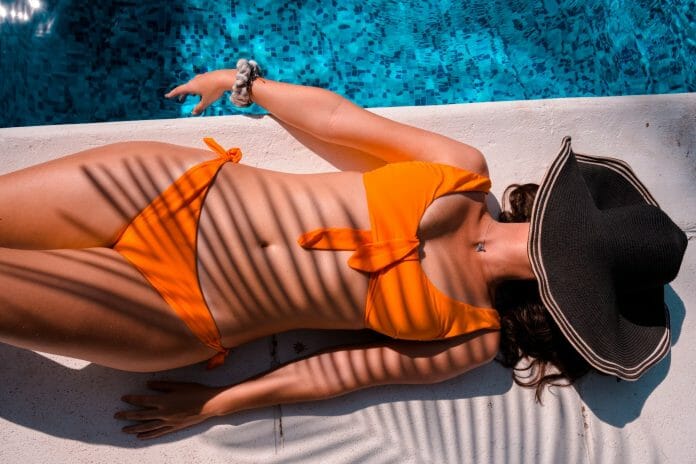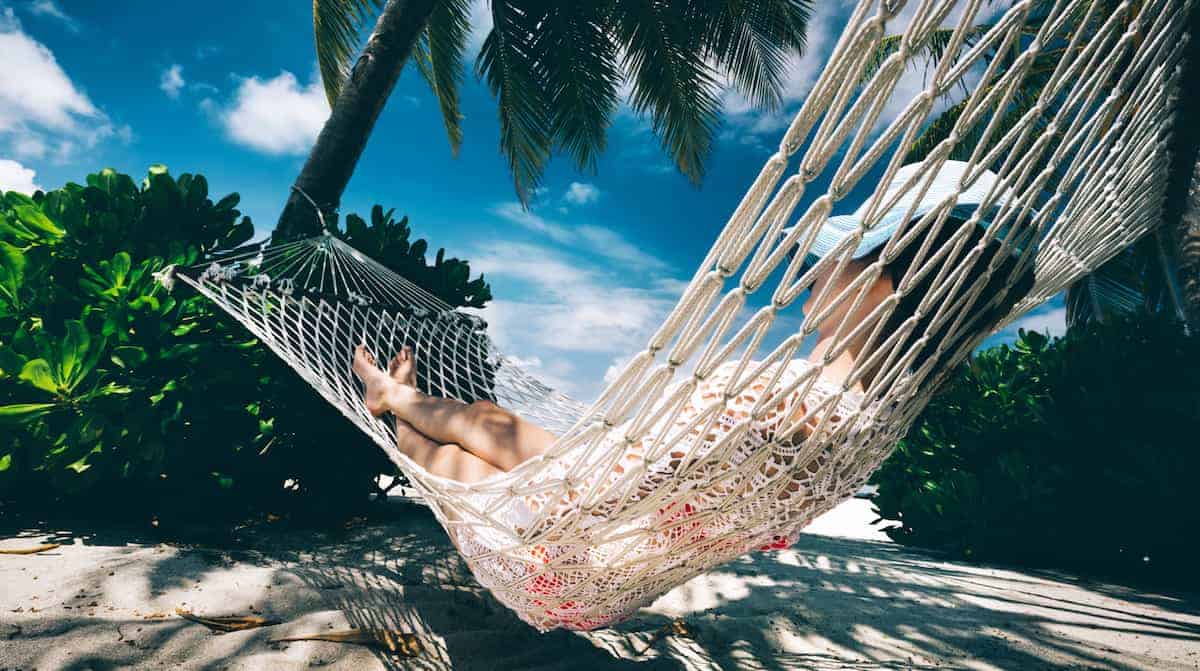While we usually like to fake tan, there are plenty of valid reasons why we all love to spend some time in the sun. First of all, sunlight boosts our levels of serotonin (nature’s own Valium, proven to alleviate anxiety).
Not only that, but it produces vitamin D which is good for bones, teeth, skin, hair and nails. Which is why you always come back from your 2 weeks in Spain desperate for a hair and nail appointment due to all that extra growth. However, all those benefits cannot outweigh the premature ageing and skin cancer risks that come hand in hand with sun exposure.
1 /Always, always avoid sunbeds
Don’t fall for the myth peddled by some salons that they can give you a ‘healthy’ tan with a sunbed. “It’s the wrong UV – tanning beds pump out huge amounts of UVA and virtually no UVB (which stimulates vitamin D), and can increase your risk of skin cancer by 75%” says Dr. Nick Lowe of The Cranley Clinic in London.
Sorry, but while we’ll let many things slide, sunbeds are not one of them. If you want a tan all year round without the risk of skin cancer, fake tan should be your best friend.
Don’t just rely on SPF; on the bottle you need to look for the term ‘broad spectrum’, which means it will protect you from both UVA (ageing) and UVB (burning) rays.
Also flip the bottle round to look at the UVA star rating. These indicate the SPF rating and can range from 1 star (minimum protection) to 5 stars (ultra protection).
Needless to say we don’t want to see any 1 stars going in your shopping basket. Go for SPF30 over SPF50. “It filters 97% of UVB rays, while SPF50 filters 98%. The latter can give a false sense of security and can be so chalky you may not reapply it every two hours like you should. If you have very dark skin (south Indian or black), SPF15 is sufficient.” Explains Dr. Lowe.
3/ Know your tanning time
In case you didn’t know, your skin reaches a tanning cut-off point when it physically can’t produce any more melanin (the tanning pigment), so it’s pointless to lounge by the pool all day.
“Everyone has their own melanin cut-off, typically two to three hours or much less if you have fair skin” says Dr Lowe. “After this you’re just subjecting your skin to the risk of UV damage.”
“Taking breaks from the sun will reduce UV intensity and your sunburn risk and means your tan will be healthier and longer-lasting” says Dr. Frank Schwanke, Head of Suncare R&D for Beiersdorf.
5/ Stay covered
As well as taking breaks and seeking shade, don’t forget to cover up with clothing, especially if you have any burnt areas. Plus it means you finally have a use for that giant straw hat you bought from ASOS.
6/ Swap ‘tan-accelerating’ creams for supplements
If you don’t believe us when it comes to ‘tan accelerating creams’, listen to skin cancer authority, Dr. Marko Lens.”Nothing you apply to your skin can improve the production of melanin, skin’s protective dark pigment.
But taking a daily 25g beta-caretone supplement can. It doesn’t mean you need less sunscreen, but it boosts skin’s natural defence against UV by improving its ability to tan.”
Certain foods are known to increase lycopene, the skin’s own SPF. An antioxidant found in tomatoes, and other red and orange fruit and veg, it can boost your sun protection by a whopping 33%.
Fun fact, one of the best sources to get this from is tomato paste – did someone say spag bol? Dermatologist Dr. Samantha Bunting meanwhile favours ones with an anti-inflammatory effect to help calm the skin after sun exposure.
“I’m a big fan of a group of antioxidants called polyphenols,” she explains. “Green tea is a great example, sip it after a sushi lunch.”
Why the sushi lunch instead of some poolside chips? Oily fish is rich in omega-3 and has anti-inflammatory powers too, that’s why.
Last but not least, dark chocolate is packed with flavonoids that can help protect against sunburn, while caffeine is thought to help cut your skin cancer risk. “It’s best taken in an espresso shot right before you hit the beach” Dr. Bunting says.
8/ Don’t mix fake tan with SPF
It may seem like a great idea combining your fake tan and SPF in one, but word of warning; the ingredient in fake tan (DHA) causes the SPF to breakdown.
By the time that product has shipped from its warehouse and made its way to your suitcase, it’s highly likely that all of the protective SPF will have broken down completely.
This is also why you should ensure you’ve tanned at least 24 hours before sun exposure as applying SPF over a fresh tan can also cause the formula to break down.
9/ Time check
The sun is at it’s hottest between 10am and 4pm, so make sure you are extra cautious during those times and take regular breaks along with covering up and seeking shade. You also need to reapply you sunscreen every two hours, regardless of whether you’ve been swimming or not, especially during these hours.
10/ Check your aftersun
This is particularly important in terms of your water intake, but in this case we are actually referring to the hydration of your skin.
If you have burnt your skin, you want to soothe it to prevent blistering and further inflammation.
Hydrated skin will also mean that tan you lusted after for so long will stick around. While it can be tempting to slap on an after sun, a lot of these formulas have a high percentage of alcohol, which means they will dry your skin out even further, causing irritation, thus loosing your tan quicker.












